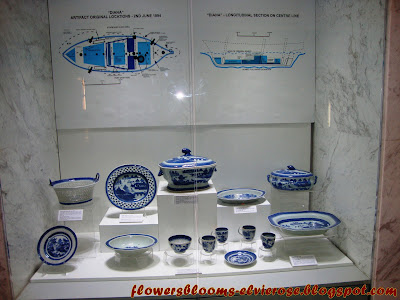National Museum"Muzium Negara" Kuala Lumpur
The National Museum (Muzium Negara) palatial building was designed based on classical Malay architecture. It was built in 1963 on the site of the old Selangor Museum, which was destroyed during WWII, to serve as a repository of Malaysia’s rich cultural heritage and as the centre for imparting knowledge on the country’s historical past. The National Museum (Muzium Negara) consist of a large central main entrance hall that is flanked by two exhibition wings. The two large murals on the exterior of the exhibition wings depicts scenes of the country – the mural on the rights depicts the culture and customs of Malaysian while the one on the left chronicals the historical episodes of the nations.
Exterior of Muzium Negara
Muzium Negara (Malay for National Museum) is a museum located on Jalan Damansara in Kuala Lumpur, Malaysia. The museum is situated in close proximity to the Perdana Lake Gardens and it provides an overview of Malaysian history and culture. Muzium Negara is a palatial structure built in the style of Rumah Gadang, an aspect of Minangkabau architecture. Its facade comprises elements of traditional Malay and modern features. Muzium Negara was opened on 31 August 1963, and it serves as a repository of Malaysia’s rich cultural and historical heritage.
An old train at the Muzium Negara premises
22 class Co-Co Diesel electric locomotive “Seri Menanti”, built by English Electric (1971). These engines were part of the “dieselisation” programme to replace steam traction. These engines mainly hauled freight trains.
The museum houses four main galleries allotted to ethnology and natural history. The displays range from free-standing tableaux showing cultural events like weddings, festivals and costumes; to traditional weapons, musical instruments, arts and crafts, ceramics, and flora and fauna.
STUFFS THAT YOU CAN SEE INSIDE THE MUSEUM
The model of Majapahit ship
Majapahit was a vast archipelagic empire based on the island of Java from 1293 to around 1500. Majapahit reached its peak of glory during the era of Hayam Wuruk, whose reign from 1350 to 1389 marked by conquest which extended through Southeast Asia, including the present day Indonesia, Singapore, Malaysia, Brunei, southern Thailand, the Philippines, and East Timor. His achievement is also credited to his prime minister, Gajah Mada.
Islam comes to Melaka
The diorama shows the conversion of the ruler of Melaka to Islam by Saiyid Abdul Aziz, a religious scholar from Jeddah and one of his followers. This led ultimately to Melaka's becoming a great center for the dissemination fo Islam throughout the archipelago.
Perak Man housed in a cave diorama
The Royal Throne of Perak (Replica)
The Royal Throne of Perak (Replica). This royal throne has been used during the installation of His Royal Highness Sultan Iskandar Shah (the 30th Sultan of Perak) in 1918. Since then it was used during the installation of His Royal Highness Sultan Abdul Aziz Al-Mustasim Bilah Shah in 1938. His Royal Highness Sultan Yussuff Izzudin Shah in 1948 and His Royal Highness Sultan Idris Iskandar Al-Mutawakkil Shah II in 1963 in Istana Iskandariah, Kuala Kangsar, Perak.
Ceramics from the Diana Shipwreck
Ceramics from the Diana Shipwreck

Ceramics from the Diana Shipwreck
The Bujang Valley Kedah
Jar/Urn Burial
Log Coffin
Najib mahu ikut Hang Tuah atau
Hang Tuah was a great warrior and was loyal to his king. He fought and defeated Hang Jebat in a gruelling duel























No comments:
Post a Comment